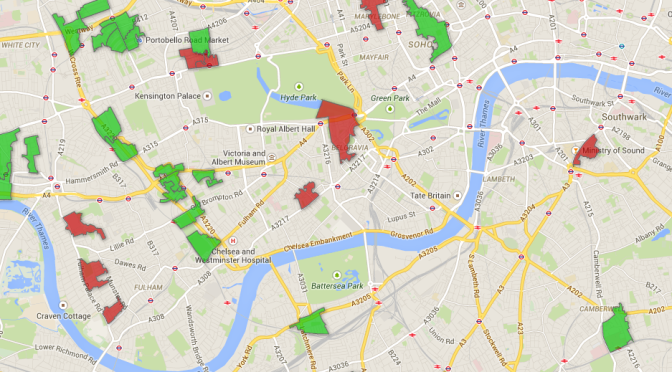Ofsted released its annual report today, and one of its key messages is that some of the poorest educational outcomes are now concentrated in more affluent outer-urban areas. Traditionally, the inner city has been the place to go if you want to find the weakest GCSE results, the highest rates of school absences and the lowest levels of transition on to further and higher education. Since the success of urban-focused policies such as the Manchester and London Challenges, however, area-based patterns in educational outcomes have started to shift, and the link between deprivation and educational outcomes shows signs of weakening.
The 2010 Index of Multiple Deprivation offers a simple way of illustrating this trend. The IMD ranks areas based on their overall level of deprivation, and also according to the educational outcomes of the young people who live there (the Children and Young People sub-domain). Comparing ranks on these two measures, it’s possible to identify two types of area: deprived areas with relatively strong educational outcomes, and less deprived areas with relatively weak educational outcomes. I’ve mapped the data for London, and the pattern is interesting. Deprived parts of inner and east London appear to have relatively strong educational outcomes, whereas many of the capital’s more affluent suburbs have relatively weak educational outcomes. It’s not a cast-iron trend, but it does seem to lend some support to Ofsted’s claims, and suggests that we need to have a more nuanced discussion about the types of area where young people’s outcomes are poorest. It may be that deprivation is no longer the most powerful compass.
[iframe src=”https://sambaars.com/education-deprivation-london” width=”100%” height=”480″]
Fullscreen map here.
